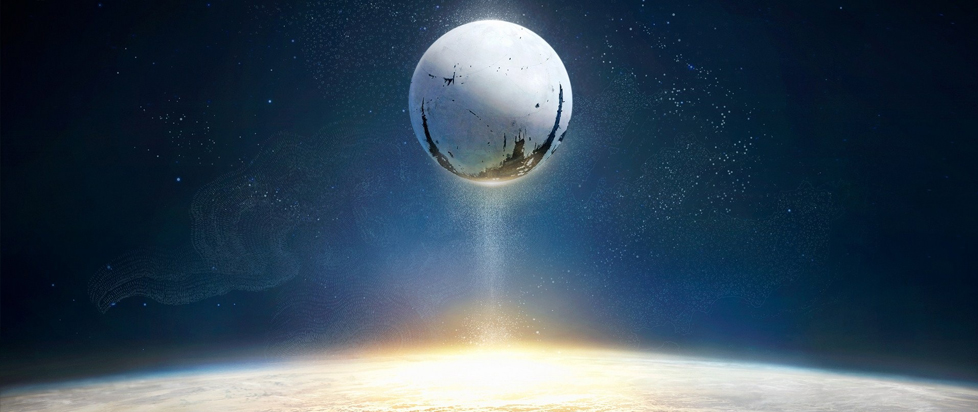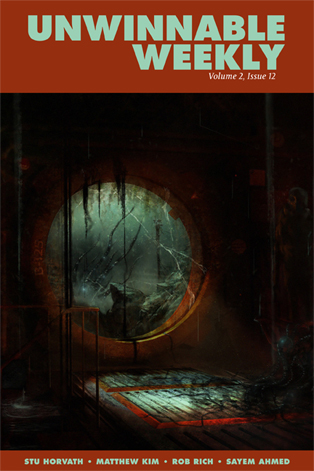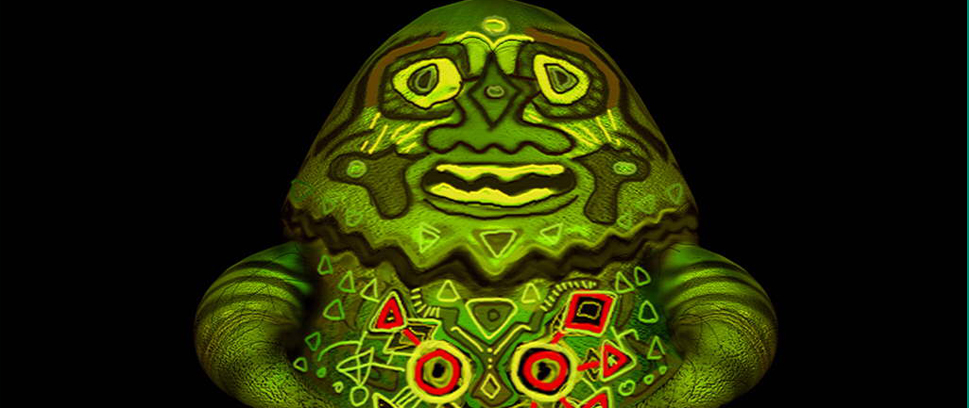
The Promise of Stargazing in Destiny
I remember looking up at the line of silver that divided the sky. The celestial anomaly that cut across the clear blue above was called the Halo Installation, a colossal monument of eco-mechanic beauty/galactic destruction. The Halo served a larger narrative purpose, sure, but Bungie didn’t have to make it so pretty. That they did demonstrates Bungie’s superb visual sensibilities.
But Halo didn’t start off as the space epic it would become over the next five games. The first game starred one heavily armed space army fighting another heavily armed space army. The first Halo, with its aliens versus space marines conflict, was essentially a retooled James Cameron film, but where the story began generic, the constant visual presence of the Halo installation was an inspired bit of design. The ring acted as a constant reminder that, despite the familiar earthly features of some of the levels (forests, streams, mountains, snow), you were still on an alien terrain. Bungie had an eye for world-building, but built their flagship series atop one-dimensional foundations.
The problem was unsurprising. The original Halo trilogy bled out an overbearing masculinity that mirrored the warrior cultures the games centered on; and no amount of mythologizing could make the two warring armies graceful. In contrast, the series’ two best entries were the spinoffs, ODST and Reach, and they favored a quieter approach.
By focusing more on intimate stories, Bungie’s ambitions of a subtler military shooter were realized. The games still followed the Halo mold of shooting aliens, driving vehicles and shooting more aliens, but they also humanized the war machines that filled the main trilogy. Bungie did this through two important decisions: embracing helplessness and removing indestructible protagonist Master Chief.
Ten years later, I’m playing Bungie’s follow-up title, Destiny, and I find myself skygazing again. Atop The Tower, Destiny’s social hub, looking at the moon is my Guardian, the player’s avatar in Bungie’s MMO/shooter hybrid. The moon is different from the installation in Halo. For one, it’s our moon, the one we can see tonight if the sky’s clear. It’s also a destination for travel, just one in Bungie’s attempt to send every player out into the solar system – our solar system.
 That’s how skygazing differs between Destiny and Halo.
That’s how skygazing differs between Destiny and Halo.
I loved looking up at the installation, but the view was hampered by the first-person perspective, forcing us to point a gun towards the sky. For the Guardians living on Destiny’s Tower, the view of the moon is much clearer. Gaining a third-person perspective at the Tower’s scenic demilitarized zone, the player was no longer forced to hold a gun at the environment. That Bungie gave players a space to fully appreciate Destiny’s scenery must have been a conscious effort to differentiate their two franchises. Sure, Destiny has the shooting, the aliens and the fast spaceships, but they went out of their way to build the player a social hub, a beautiful one at that, one that resembles (not coincidentally) an observatory.
You’ve been reading an excerpt from Unwinnable Monthly Issue 64.
To read the article in its entirety, please purchase the issue from the shop or sign up for a subscription to Unwinnable Monthly!





